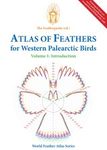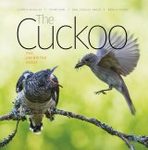By: BM Freeman(Author), Margaret A Vince(Author)
394 pages, b/w illustrations
![Developments of the Avian Embryo Developments of the Avian Embryo]()
Click to have a closer look
About this book
Contents
Customer reviews
Related titles
About this book
Reprint of the original 1974 edition.
Contents
One: Behaviour
1. Incubation Requirements
1.1 Introduction
1.2 Requirements of the embryo of the domestic fowl: Heat - Humidity - The gaseous environment - Egg position and change of position
1.3 Incubation requirements of other domestic species
1.4 Incubation in wild birds: Incubation sites - Warming of the eggs - The problem of cooling - The continuity of attentiveness - Humidity - The gaseous environment - Egg shifting or turning - Hatching success
2. General Development, Postural Changes, Activity and Relationship between the Embryo and Other Structures within the Shell
2.1 Changes in size, posture and position in the domestic fowl embryo during incubation
2.2 Embryonic activity during incubation in the domestic fowl embryo: Passive movements - Active, spontaneous movements - Significance of spontaneous activity
2.3 Hatching and emergence in the fowl
2.4 Structural and behavioural development in species other than the fowl: Structural and behavioural development during the first two-thirds of incubation - Pre-hatching and hatching behaviour in species other than the fowl
2.5 The characterization and scoring of embryonic movements: Terms used to describe embryonic activity - The quantification of embryonic motility
3. Vocalization and Communication in the Natural Situation
3.1 Species which can vocalize before hatching
3.2 Prerequisites for the onset of vocalization
3.3 Types of stimulation followed by embryonic vocalization
3.4 Effects of embryonic vocalization on the parent
3.5 Long-term effects of embryo/parent interaction
3.6 The earliest stage at which embryos become responsive to parental calls
4. Effects of External Stimulation on Embryonic Activity, Rate of Development and Time of Hatching
4.1 Introduction
4.2 The synchronization of hatching in quail: Effects of stimulation on the time of hatching - Problems arising from changes in hatching time - Signals which have accelerating or retarding effects on neighbouring eggs - Effects of accelerating and retarding signals on the rate of development
4.3 Effects of accelerating and retarding stimulation in domesticated species
4.4 Effects of light in the fowl
4.5 Embryonic interactions in wild species
4.6 The embryonic response to stimulation
5. The Nervous System
5.1 Introduction
5.2 Development of activity in different parts of the nervous system: Spontaneous activity - Responses of the brain to stimulation
5.3 Neural mechanisms mediating early motility in the embryo of the domestic fowl: The development of motor and sensory areas in the spinal cord -The part played by the brain in controlling periodic, random motility - Independence of periodic, random motility from sensory input - Areas of the brain which influence periodic random motility
5.4 Neural mechanisms mediating pre-hatching and hatching behaviour: - The spinal cord and pre-hatching behaviour - The midbrain and pre-hatching behaviour - The forebrain and hatching - The cerebral EEG during hatching
5.5 Neural correlates of embryonic motility: Nervous activity in the spinal cord between I5 and I9 days - The polyneuronal burst discharge between days 5 and 20 - Neural correlates of motility - Communication between different parts of the spinal cord
5.6 Inhibition
5.7 Sleep and arousal
6. The Development of Sensory Systems
6.1 Introduction
6.2 The non-visual response to light: Evidence for a non-visual response to light in newly hatched pigeons - Evidence for a non-visual response to light in pigeon embryos
6.3 Tactile sensitivity: The onset of sensitivity - The type of movement evoked by tactile stimulation - Response decrements with repeated stimulation
6.4 Vestibular sensitivity
6.5 Proprioception
6.6 Hearing: Development of the auditory system - The age of onset of auditory sensitivity - The development of auditory sensitivity - The ontogeny of auditory discrimination
6.7 Taste: The sense of taste in birds - Development of a taste sense in the embryo
6.8 Vision: Development of the visual system - Response to light in the domestic fowl - Colour vision - The behavioural response to light - Effects of previous experience on the responsiveness of the visual system - A comparative view of the onset of visual function - Effects of light on the embryo in ovo
6.9 Olfaction: The olfactory sense in birds - Development of olfaction in the embryo
7. Conditioning of the Chick Embryo and Conclusions to Chapters 1-7
8. The Newly Hatched Bird
8.1 Introduction
8.2 Requirements of the neonate: Warming and cooling - Righting and standing - Social attachments in young birds - Feeding behaviour - Oiling and preening
8.3 What is new in the life of the neonate?
8.4 Effects of new environmental stimuli on neural mechanisms
8.5 Conclusions
Two: Physiology
9. Gaseous Exchange and Oxygenation of the Embryo
9.1 Gross oxygen consumption and carbon dioxide production
9.2 The shell and the chorio-allantois: Structure of the shell - Development and structure of the chorio-allantois
9.3 Physical aspects of gaseous exchange: Oxygen - Carbon dioxide - The air space - Maximum gaseous flux during incubation
9.4 The blood and vascular system: Red blood cells - Blood volume and pressure - The heart - Haemoglobins - Oxygen affinity of haemoglobins - Blood gases
9.5 Efficiency of the chorio-allantois as a surface for gaseous exchange
9.6 Effects of altitude
10. Nutrition and Utilization of Albumen and Yolk
10.1 Nutrition of the developing bird: Essential amino acids - Carbohydrate - Essential fatty acids - Minerals, trace elements and vitamins - Energy sources
10.2 Gross composition of the egg and the changes during incubation
10.3 The albumen and its utilization: Composition - Absorption - Functions
10.4 The yolk and its utilization: Composition - The yolk sac membrane - Utilization of yolk
10.5 Energy metabolism
10.6 The sub-embryonic fluid
11. Acid-base Balance
11.1 Blood pH and pCO2
11.2 Plasma bicarbonate
11.3 The compensation of respiratory acidosis: The sources of bicarbonate - The possible role of the kidney in excreting bicarbonate
12. Excretion and Water Balance
12.1 Introduction
12.2 The development of the excretory system: The pronephros - The mesonephros - The metanephros
12.3 Synthesis of nitrogenous excretory products: Metabolism of the amino group - Urea - Uric acid
12.4 The pattern of excretion during development: Excretory products - The organs of excretion
12.5 The allantoic sac: Storage of excretory products - Active transport by the allantoic endoderm
12.6 Water balance: Sources of water - Factors affecting water loss - Gross movements of water within the egg - Conservation of water
13. Hormones in Development
13.1 General introduction
13.2 Thyroid hormones: Development of the thyroid glands - Synthesis and secretion of hormones - Metabolic effects of the thyroid hormones - The thyroid and hatching
13.3 Parathyroid hormone and calcitonin: Introduction-Development of the parathyroids and ultimo-branchial bodies - Secretion of parathormone and calcitonin - Significance in development
13.4 Adrenal hormones: Development of the adrenal glands - Synthesis and secretion of adrenal hormones - Significance of adrenal cortical hormones in development - Significance of adrenal medullary hormones in development
13.5 Pancreatic hormones: Development of the endocrine pancreas - Structure and secretion of insulin and glucagon - Role of insulin in development - Role of glucagon in development
13.6 Gonadal hormones: Development of the genital system - Synthesis and secretion of gonadal hormones - Significance in development
13.7 Hypophyseal hormones: Development of the hypophysis - Secretion of hormones by the pars distalis - Significance of hypophyseal hormones in development
13.8 Glands of uncertain endocrine status: Bursa of Fabricius - The pineal gland
14. Mobilization and Utilization of Calcium Stores
14.1 Physiological aspects of calcium transport
14.2 The sources of calcium and gross changes during incubation
14.3 The role of the chorio-allantois in calcium transport: Solubilization of calcium - Active transport by the chorionic ectoderm
14.4 Changes following calcium resorption: The shell - Plasma calcium
14.5 Mineralization of the bones
15. Physiology of Hatching
15.1 General introduction
15.2 Pulmonary respiration: The respiratory system - The onset of breathing: the pulmonary stimulus - The development of the breathing pattern
15.3 Circulatory and associated changes
15.4 Pipping
15.5 Active hatching
15.6 Withdrawal and fate of the yolk sac
15.7 Oxygenation and energy metabolism during hatching
16. The Neonate
16.1 Introduction
16.2 Thermoregulation: Ontogeny of thermoregulation - Mechanisms of thermoregulation
16.3 The alimentary tract
16.4 Immunological competence
16.5 Concluding remarks
Appendix 1: Chronology of development in the domestic fowl
Appendix 2: Development of the chick embryo in relation to the shell, yolk, albumen and extra-embryonic membranes by Beryl Tolhurst
References
Customer Reviews
By: BM Freeman(Author), Margaret A Vince(Author)
394 pages, b/w illustrations


































